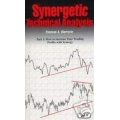Selling Puts in an Ugly Market Seminar (Total size: 215.0 MB Contains: 8 files)
 Click to enlarge |
|
Summary
✅What accounts for put-write strategies' under-performance.
✅How to fix put-write underperformance.
✅Why "easy money" isn't so easy.
Hardly a day goes by that I don't read an article or hear some pundit extol the merits of selling puts (put-write). Selling puts seems to be of such interest that there are even ETFs, such as WisdomTree CBOE S&P 500 PutWrite Strategy ETF (PUTW), that offer an easy path for the inexperienced investor to complement their portfolio with put-write exposure.
Over the years I've written scores of articles with the goal of trying to help investors use options intelligently. My perspective has always been to lay the fundamental groundwork that investors need before they go "jumping in" to areas that are complex. I hope this article will add to the reader's knowledge base. If the reader knows more, they can make better choices.
Let me start off with a qualification. Many investors use options on a "one-off" or "hit-and-run" style. They are using options as a trading vehicle, not as an investing vehicle. I can't and won't address this type of option usage because I'm an investor not a trader. Instead, I will concentrate strictly on the investor that is looking to supplement their portfolio. These investors typically sell puts as a substitute for direct stock ownership; an adjunct to portfolio protection; a "wait and see" and similar objectives. They are not "in-and-out" but more permanent in nature.
This article will benchmark results of various strategies relative to the S&P 500 Index. Of course, one can't directly buy the S&P 500 Index (though they could buy the underlying stocks). So, this article will be of primary value to those that own or use an ETF that follows the S&P Index such as the SPDR S&P 500 ETF (SPY). Though one can't buy the index without using the ETF, they can utilize options on the Index, such as SPX. Personally, I use options on the index itself utilizing SPX. However, position size and some other factors of SPX make it impractical for many investors and will force investors into SPY. But for those using stocks or ETFs that don't follow the S&P 500, don't despair - the comparisons put forth here can be extended to almost any stock. After all, any index is just a compilation of the behavior of the underlying stocks.
The Selling Point
No, I'm not starting out with the point at which one should sell puts. Instead, I'm referring to how options are "sold" or marketed to investors. For we must, at some stage, reconcile what investors are told with reality.
The allure of selling puts is derived from the perception that they are less volatile and offer some downside protection as opposed to outright ownership of the underlying. This is mostly true. Selling puts can be less volatile and will outperform in a steadily down market or a steadily flat market. At least in theory.
The Theory
The basic theory that attracts investors rests on the prospects of pocketing extrinsic value. If there were no extrinsic to pocket then one might just as well own the underlying. Now the amount of extrinsic varies with the strike, the expiry and volatility. There is no single rule of thumb that computes the amount of extrinsic. But, if we restrict our universe to weekly ATM puts value with average volatility, the extrinsic could be expressed as a percentage of the underlying price - usually ranging around .40% to .50% of the underlying price (and can be much higher at extreme volatility). That means, if SPY is trading at, say, $290, one can expect the average weekly ATM extrinsic premium to be around $1.20 to $1.45. By extrapolating the potential extrinsic using the .50% number and assuming the market is flat for one year, one can make 26% by collecting .50% x 52 weeks. Pretty good considering investing in the underlying was completely flat.
So, we start with a potential upside of 26% but we have to modify the potential return by accounting for losses incurred when the market drops. But 26% is a big cushion for absorption.
The problem with this theory is there is no such thing as a steadily flat market or a steadily up market or a steadily down market. Markets are not steady. They unpredictably move in whatever direction they are headed in fits and spurts, ups and downs, zig-zags.
Proof of content,please see the images
Delivery to your PayPal email address within 24 Hours of payment confirmation.
Completing units:
![]() Selling Puts in an Ugly Market Seminar (Total size: 215.0 MB Contains: 8 files)
Selling Puts in an Ugly Market Seminar (Total size: 215.0 MB Contains: 8 files)
To buy without signing in contact us here:
Market Sales Price: $399,but we sell lot more lower than that to share the opportunity with you!
Our Policies
A. Product Quality
- We ensure that the quality of the course is good, and we update them regularly to help you keep update.
- If there is a problem you can not use, please let us know so we can fix it soon or if there is any notification, we will inform you immediately.
B. Shipping Method
- After receiving your payment, we will send you a link to access and download the course. If our team is not in the office, please wait for us about 8 hours to come back.
C. Refund Policy
We do not accept refund after you got the link and download the course.
We will refund your money in case of:
- Item is not as described
- Item doesn’t work the way it should
- Item support extension can’t used
Serving Professional Traders Since 2008
Once purchased I will email you the files within 20 minutes and not more than 48 hours to your email, if there a delay, please be patience receiving your files

 Categories
Categories Information
Information Specials
Specials-38x38.jpg)





-38x38.jpg)

-38x38.jpg)
-38x38.jpg)
-38x38.jpg)
-38x38.jpg)
-38x38.jpg)

-38x38.jpg)



-38x38.jpg)


-38x38.jpg)
-38x38.jpg)
 Featured
Featured

























 Shopping Cart
Shopping Cart Bestsellers
Bestsellers-38x38.jpg)
-38x38.jpg)
-38x38.jpg)




-38x38.jpg)







-38x38.jpg)

-38x38.jpg)

















-38x38.jpg)

















![[Full Bundle] 3 in 1 Tradimo Learn To Trade (ENJOY FREE BONUS WickorTreat Trading Course) [Full Bundle] 3 in 1 Tradimo Learn To Trade (ENJOY FREE BONUS WickorTreat Trading Course)](https://www.missionforex.com/image/cache/data/t1517-120x120.jpg)
